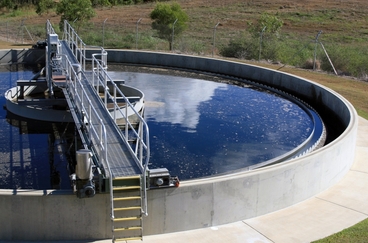
Proper secondary clarifier operation is key to successful biological treatment in activated sludge. Normally we design clarifiers for a hydraulic residence time of 2 - 6 hours all based on actual or anticipated solids flux testing. If residence time is too low, we see solids carryover the weir and high TSS in the effluent. Additionally, the return sludge (RAS) concentration is low and beneficial biosolids are being lost to the effluent via washout. If hydraulic loadings are creating too low a retention time, modifications to the clarifier can reduce water velocity allowing for improved function. Other options include adding polymers to improve floc density which gives more rapid settling. Akin to adding polymers, certain bioaugmentation cultures contain polymer producing microbes that grow in the system increasing floc density which can reduce overall operational costs - but these cultures must fit the system and be evaluated much like polymer jar testing.
In some systems we see the retention time in the clarifiers is too long, resulting in floating sludge (denitrification) and excessive torque on the rake caused by dense biological solids on the bottom. To ensure this does not happen, increase the recycling rate and maintain a bed depth below 2 feet in most clarifier designs.
Again - all operations are site specific depending upon influent flows, design parameters, and current system biological/chemical conditions. Evaluation of settling rates (SVI, solids flux), effluent turbidity/TSS, clarifier bed depth, RAS & MLSS Concentrations, and flow rates can allow for modeling of what happens with variation in influent flows and concentrations and can improve daily operations while reducing treatment costs.

 RSS Feed
RSS Feed